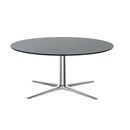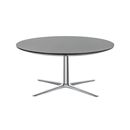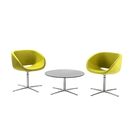Tafels
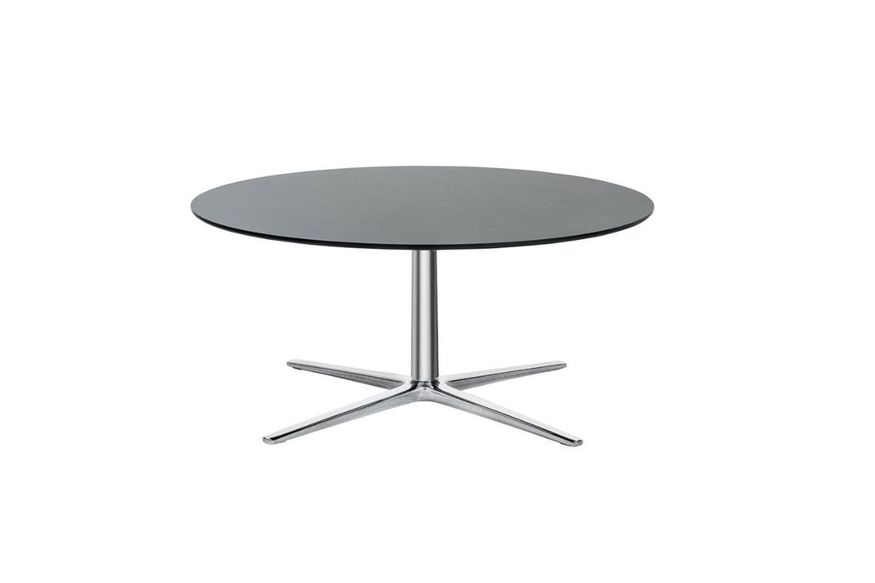
LIMUN Coffeetable
Downloads
- LIMUN_Productinformation
(509 KB) - 2175_LIMUN_Coffeetable.dwg
(1 MB)
Frame 2175
Die-cast aluminium frame polished as standard, optionally powder-coated with black matt structure. 4-arm base with conical cantilevers running from 35 mm to 22 mm. Support column fixed to the base Ø 50 mm at the bottom and Ø 40 mm at the top with a round support bracket screwed to the table top. Optionally, the pedestal can be rotated.
Table tops
Table top C: 30 mm thick, multi-layer particle board, E1, coated in high pressure laminate (HPL) or veneer according to BRUNE ® collection. Plate bottom side HPL white or beech veneer. ABS edging in connection with laminated top or veneer edging in combination with veneered table top. Corners rounded R65
Table top R: 30 mm thick, 28 mm strong multi-layered plywood, surface coated in high-pressure laminate (HPL) or veneer according to BRUNE ® collection. Lower surface: HPL white or beech veneer. Edges multi-layered plywood, straight edges, 9 mm thick, beveled over 45 mm. Corners rounded R65
Solid core Resopal: 10 mm thick top, solid HPL anthracite, table edge bevelled at 45° at the bottom.
Veneer fisnish (Table top C and R)
Real wood veneer from the BRUNE ® collection comes as a standard varnished with a low solvent content water-based lacquer, optionally stained to the BRUNE® collection.
HPL surfaces (Table top C and R)
Resopal®-HPL from the BRUNE® collection.
Dimensions and weight - Model 2175
Table height for tops C and R: 40 mm, table height for solid Resopal top: 38 mm.
| Table size | Weight | |
| Ø 80 cm | 14,5 kg |
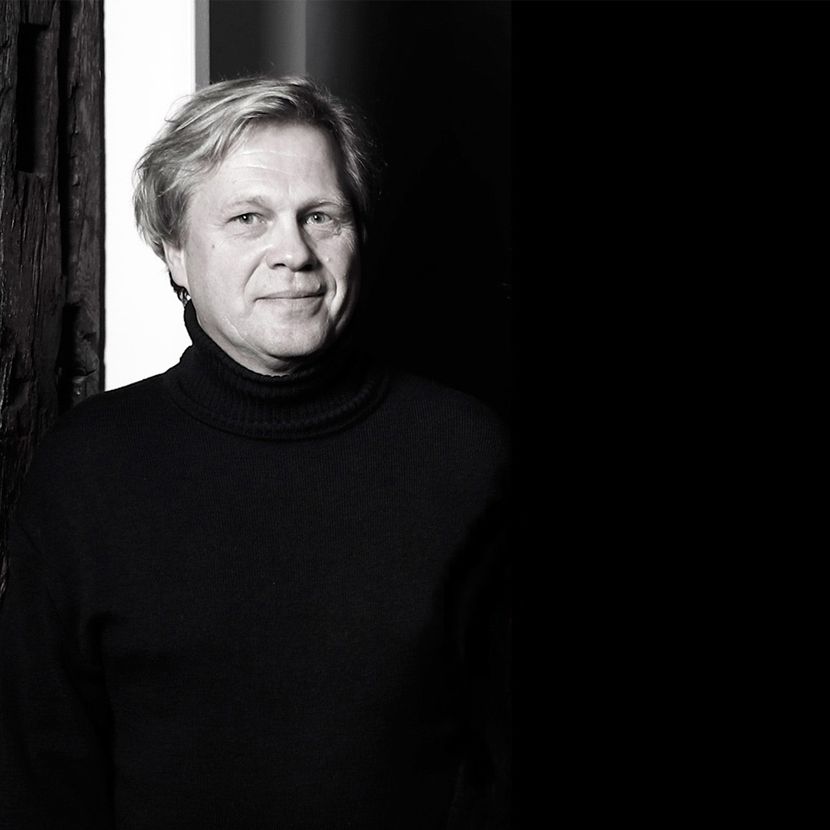
Andreas Ostwald
Andreas Ostwald (geb. in 1964) volgde voor zijn studie aan de Muthesius Hochschule in Kiel een opleiding tot beëdigd keramiek-ontwerper in de Porzellanfabrik Friesland.
Hier ontdekte hij zijn liefde voor het witte goud. Bij de vervaardiging van prototypes voor de porseleinproductie leer je hoe je met gips driedimensionale curves en sferische oppervlakken op de tiende millimeter nauwkeurig kunt beheersen.
Na zijn opleiding werkte hij als ontwerper voor diverse ontwerpbureaus en bedrijven.
Als professor gaf hij 10 jaar les in de methodiek van het designproces aan de Muthesius Hochschule in Kiel, voordat hij in 2006 naar de HFK Bremen overstapte en hier tot 2013 les gaf in geïntegreerd design.
Op het gebied van productontwerp is hij naast de ontwikkeling van zitmeubels met name geïnteresseerd in het ontwerp van lampen voor bekende nationale en internationale fabrikanten.
Hij was lid van de "Rat für Formgebung" en in deze functie ook jarenlang lid van talloze vakjury's. Zijn werk werd met talloze gerenommeerde prijzen onderscheiden.
Andreas Ostwald woont met zijn vrouw en drie dochters in Harvestehude.
 Zitmeubelen
Zitmeubelen Tafels
Tafels Kapstoken
Kapstoken Transportmiddelen
Transportmiddelen Restaureren
Restaureren Projecten
Projecten Stof
Stof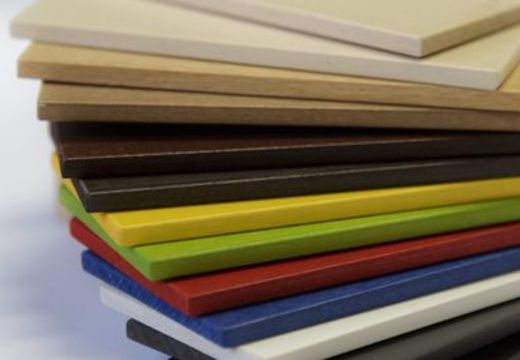 Beits- & Stahlkleuren
Beits- & Stahlkleuren CPL en kunststof zitschalen
CPL en kunststof zitschalen Tafelbladuit- voeringen
Tafelbladuit- voeringen